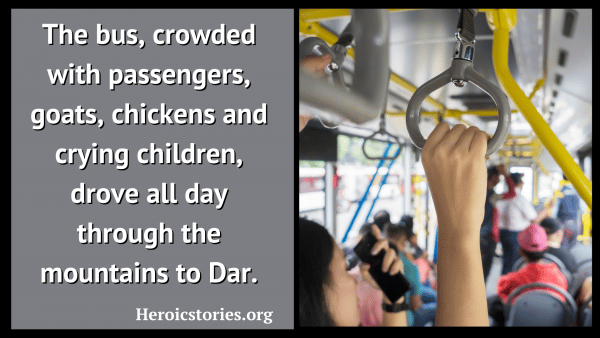By Gabrielle Blair

My sister is a hero who was saved by heroes. In 1964, she was a 22-year-old South African freedom fighter. During the height of apartheid, with Nelson Mandela in prison, Hilary and Ronnie, her husband, belonged to the African Resistance Movement (ARM). ARM’s aim was not to be terrorists or to hurt anyone, but to disrupt the economy, demolish racism, and build an egalitarian society.
One night, a fellow activist warned them that the Special Branch had their names; if they were caught, imprisonment could be long and mean solitary. Hilary packed a small canvas rucksack: their passports, degree certificates, post-office savings book, some jewelry, and warm clothing. At a snowy daybreak, huddled in duffle coats without gloves or helmets, they left South Africa forever.
Thus began a long journey through Africa to safety, helped by fortune and good souls along the way. At the Bechuanaland border, the guard—who was warned an hour later to watch for two dangerous saboteurs on a motorbike—let them through, believing them to be students going bird-watching.
Granted asylum as political refugees, they headed for their first safehouse, where they learned that they were front page news in the South African press. After vigilantes bombed part of the safehouse—meant for them but hurting no one—the High Commissioner said they must leave. As the roads north were impassable for a motorbike, they gave it away. He arranged a ride in a tiny Piper plane to fly them north to safety. The pilot, knowing that his passengers were fugitives with political views he didn’t share, gave them the ride from hell. Swooping and diving, skimming the treetops, the plane landed bumpily on a dirt airstrip, discharging them sick and frightened beside the Zambezi River, the border with Northern Rhodesia. They were unable to get a permit to cross the river, but a truck driver agreed to take them on a pontoon, where they hunkered among the sacks of vegetables, hidden from view.
Then followed a long night hitching a ride on another truck and a goods train to Lusaka, where they turned themselves in to the police. Hungry and exhausted, they waited for hours, eventually finding out that Prime Minister Kaunda, who was sympathetic to South African dissidents, was personally sending his aide, Chief Fresh Chitimukulu, to drive them 300 miles to safety. Traveling at high speeds over rough roads, Chitimukulu dropped them off at the Tanzanian border. He accepted no payment, and they had no money to offer. They hugged him, and Ronnie gifted him his duffle coat. It was dark and dangerous as they stumbled through the border fence towards the distant lights of Mbeya.
After spending the night in a police cell, they found themselves prisoners, but not locked in. A stranger took them out for a meal; they returned to wait, sitting on a wall in plain sight of snow-topped Kilimanjaro. Once verified as political refugees, they were released and directed to another refugee safehouse. The Catholic priest from the mission school gave them ten pounds for bus fare to Dar es Salaam. The bus, crowded with passengers, goats, chickens and crying children, drove all day through the mountains to Dar, where they registered again for political asylum and received a small stipend and a place to stay.
In September, Immigration told them that Tanzania would no longer “offer them open house.” With a week to leave, frantic telegrams flowed between our parents in Johannesburg and a lawyer friend in London, who arranged their airfare just in time. On September 9th, that friend and I were there to meet them at Heathrow airport. Their ordeal was over. They are forever grateful to the many strangers who helped them to safety: the heroes who saved my heroic sister and brother-in-law, who fought for justice in a harsh time and place.
Podcast: Play in new window | Download (Duration: 5:45 — 4.5MB)


This telling, quietly laid out on the page, truly bought the events, dates, and locations of modern history to life.
Thankyou for sharing.
John
I especially like the way the author, Gabrielle Blair, shares such an interesting story that the reader is immediately drawn in by her well-chosen words and waiting to find out what happens next. Not only is this an important story in South African history, but there were so many heroes who took part in seeing that the two main heroes made it to a safe haven.